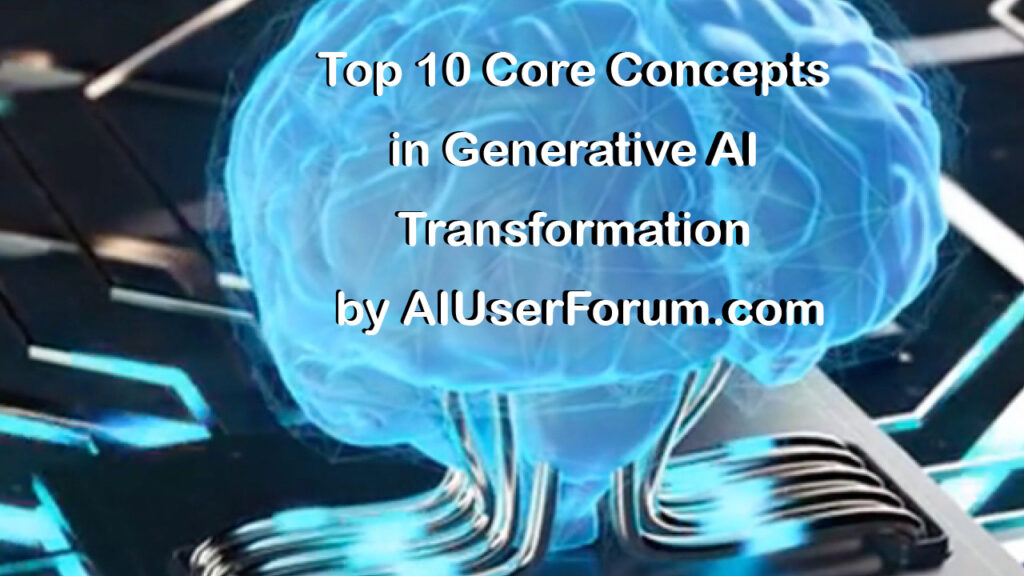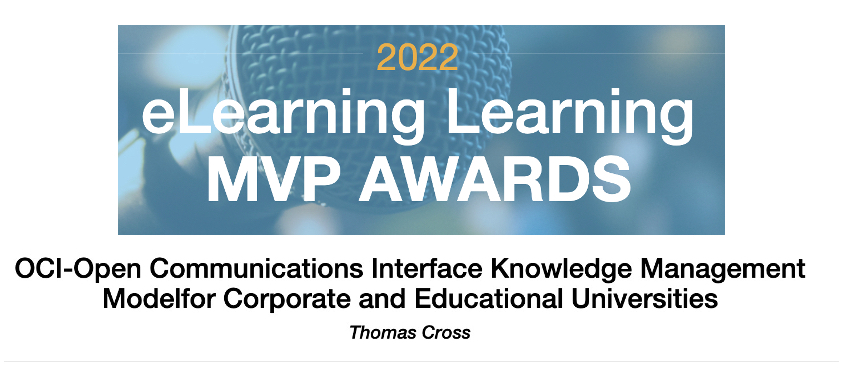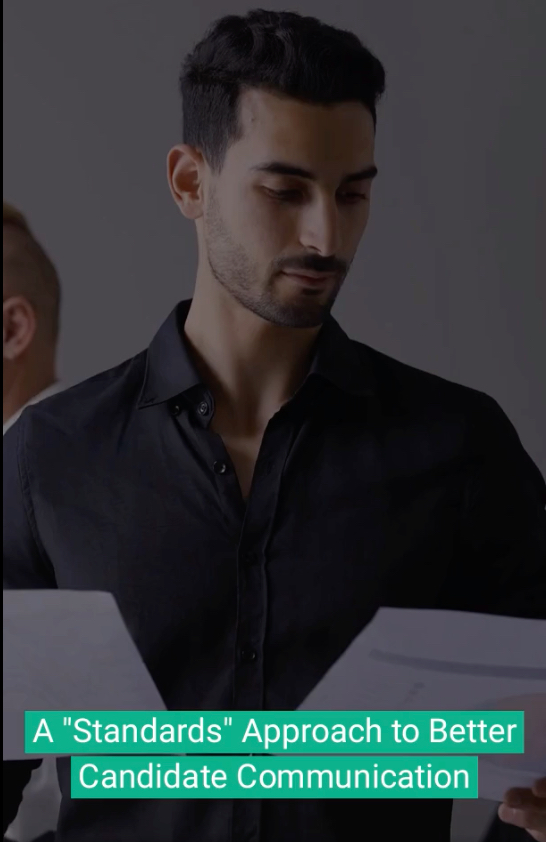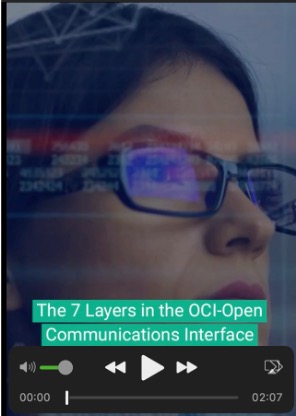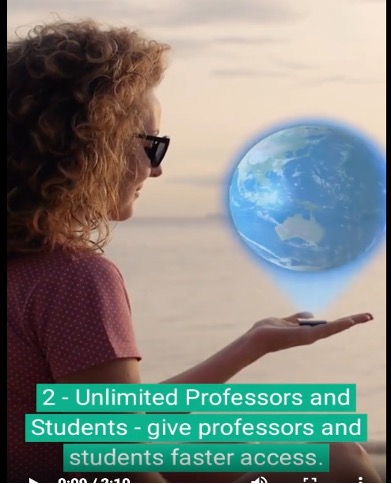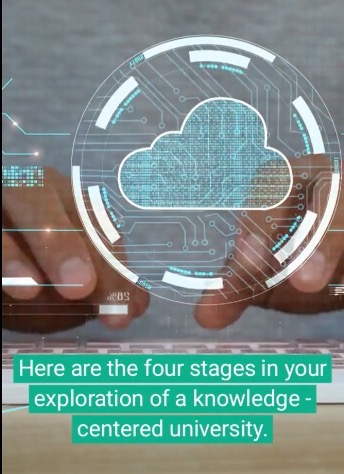Three Critical Concepts in Building a Corporate University – Content Standards – Knowledge Network Platform – Organizational System
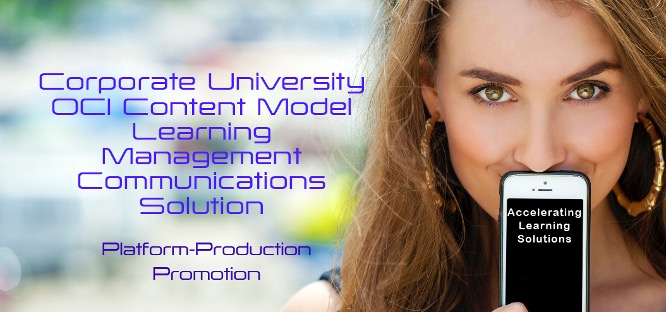
Building a Corporate University – Professional Educational Organization
Three Critical Concepts
Quick Summary – If you need a content, learning management system (LMS) platform, course development or corporate university organizational structure we can help with one or more of these vital elements.
Here are the 1-2-3 process:
1 – Start building using dictionary-glossary using Techtionary featureset in a “standards” approach to content design, development and delivery using the OCI-Open Communications Model similarly to the OSI-Open Systems Interconnection Model which is the foundational structure of the internet. We can build content using this model or guide you.
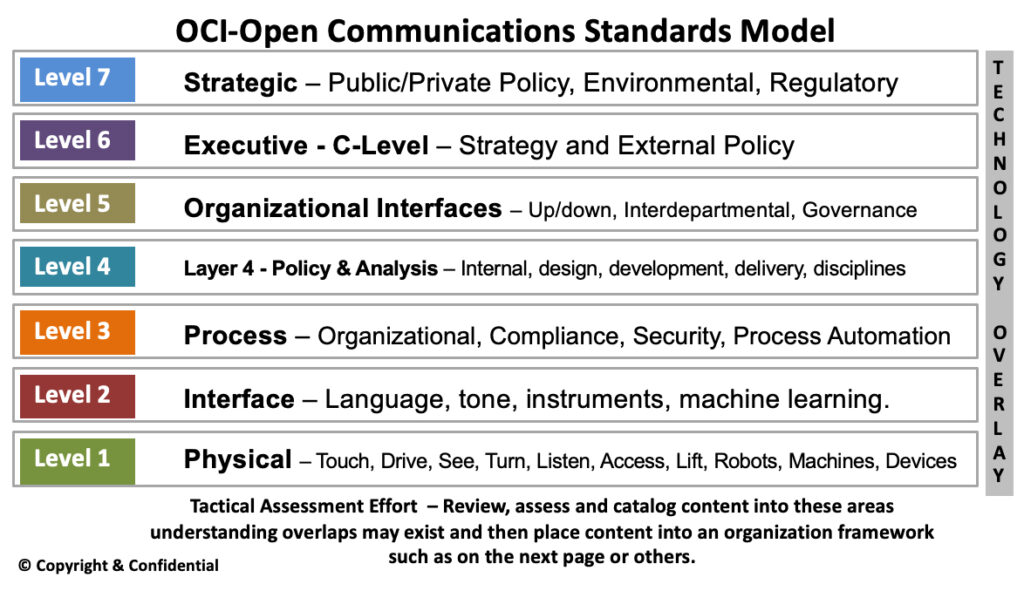
Incorporate generative AI concepts into the OCI standards approach to content development. Here is a an article and 3-minute video on this issue.
2 – System development with a content and learning via a management system platform to facilitate content delivery, faculty and student communications and enhance the learning experience.

If you already have an LMS, we can help with content or organization or connect you with others who can. Or we can provide or hire instructional developers and partners along with provide courses from our growing catalog of learning providers. However, if you have no courses, no LMS and no organizational structure, we have proven plan to “bring it all together.” We have decades of real-life experiences in building hundreds of courses, delivering to thousands, managing LMS platforms, consulting with small businesses to Fortune-100 companies for domestic and international educational delivery.
3 – Support the complete process with an organizational system to facilitate, enhance, collaborate and create communications consensus. We can build a corporate university structure based on this or similar models or guide you in your own efforts.
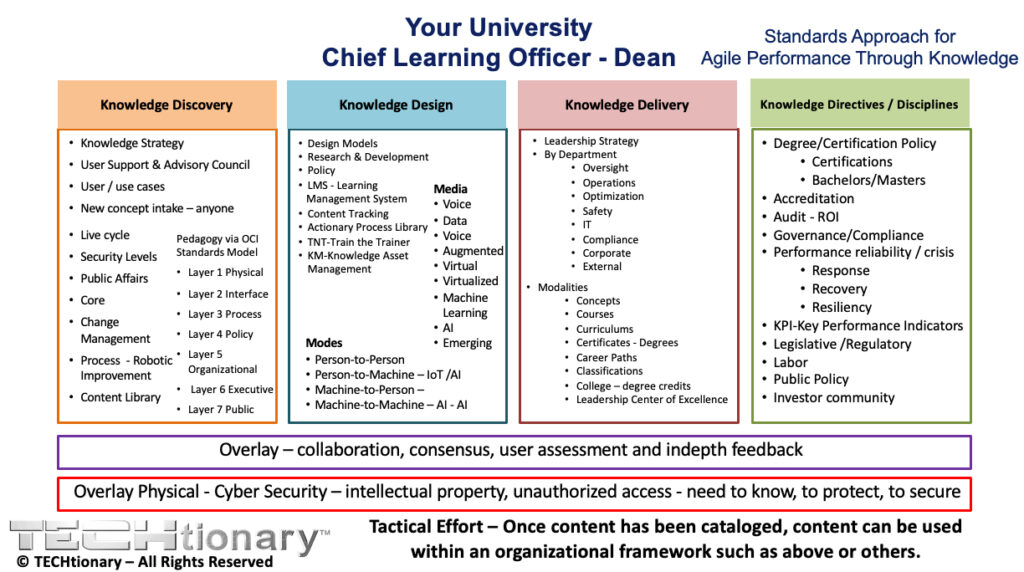
Click here for PDF for off-line reading or sharing.
Overview
Building any business or organization of any kind will always be limited by the skills or knowledge known and understood by the people doing their jobs. “You can do what you don’t know,” is a key tenet to why training is fundamental to every business function. Cybersecurity training is now a “must-have” for every user, partner, supplier, guest or user who accesses a computer-system via any device to prevent ransomware, phishing and other malware attacks. There are also new laws, regulations and requirements for unemployment insurance, harassment, payroll, privacy, OSHO, safety, business practices, ethics, customer contact, trouble ticketing, process and specialized tools which also require knowledge of and in some cases government certification. “You can’t sell, what you don’t know” – as selling customer solutions has also become more vastly complex and understanding how customers will buy them, use them and continue to use them or find others will all require more and more ongoing training.
To manage this here are some of the elements needed:
1) A content design, development and course delivery system to build or buy.
Courses are composed of content elements like DNA that can be organized into sales 101 to advanced advisory seminars.
2) A system to manage the professors, courses and students often referred to as a LMS-learning management system to be the library of the courses, the means for students to complete them, gain certifications and ideally a career path.
3) An organizational structure or corporate university or even someone to be the contact for training.
Core to corporate training whether offering them internal or via certifications externals along with public educational programs are these key elements – content, courses, curriculums – certification.
In this brief paper, we will explore the elements with these key issues.
Corporate University Business Plan Contents
1 – Course Content & Curriculum Development
2 – Course Curriculum – Learning Management Communications System (LMCS)
3 – Corporate University Organization
—————————————————–
1 – Course Content & Curriculum Development
“A ‘standards’ approach to content is core to any course in any curriculum for any certification or college degree and a competitive edge for companies.” D.P. CEO
In the spirit of building content, a standards approach was conceived fifteen years ago called the OCI model. Like the role of grammar rules, style guides and methods to language, the OCI model is vital as there are no courses, curriculum, college and business presentations and more without content and better yet great content. Yet without standards for content, content, speeches and presentations often can have little or no value to the company, student, audience or social media community. Yet building content is a complex process which is why TECHtionary is an innovative multimedia dictionary was developed. Instructional developers (ID) can use TECHtionary or not to help provide a “standards” approach to terminology and concepts so everyone is “one the same page” as to what simple and complex terms mean.
Here is one view of the OCI model “The OCI-Open Communications Interface model is an important and compelling companion concept to the OSI-Open Communications Interface model. For without the OSI model, the internet would not exist today. The OSI model addresses such critical issues as physical, data, network, transport and other layers; it focuses on the technology interfaces rather than the human interfaces that are needed to make the internet work.
Today and in the future, cybersecurity, digital transformation, wireless, AI and other emerging technologies will need better and better ways to understand how to use them. As these complex issues will need to be explained to the people of all levels from private networks to environmental public policy. This is where the OCI model is critical to the future of the internet. By bringing education, learning and communications of human touch, language, business, strategy and other issues together are important ways to solve the issues. The OCI is an important process for every business, policy makers and standards groups to use with their own education, design, development and deliver frameworks, architectures and business models now and in the future.” Dan Baldwin, Executive Director, Telecom Association
“A must-have for every organization, the OCI Model like the OSI Model is a free open model and after we implemented it, we accelerated our revenues, lowered costs, reduced inefficiencies, improved process management and streamlined business operations.” DP CEO
The OCI-open communications model is not the only approach to content design, development and delivery but a viable one. There are 7 Layers in the OCI Model which is a knowledge-content management model for corporate and educational universities to develop a standards-approach for knowledge design, development, delivery & disciplines.
The model breaks each layer and provides unique functions such as.
– Breaking issues into distinct activities – separates functions from one another.
– Simplify processes – to provide unique functions.
– Provide means to create standards – to all the different companies to work together.
– Provide means for compatibility – at least tries to build “common” training programs.
such as fundamentals of management, supervisory, manufacturing, communications, regulatory compliance, mechanical and others.
– Recognizes you don’t have to do everything at once – solves the problem of too few or too many functions.
– Allows for overview, security and management checks at each layer.
– Provides for management view and consensus building.
The 7 layers of the OCI model are.
Layer 1 – Physical – touch, drive, see, turn, listen, access, lift, robots, machines, devices.
Layer 2- Interface – language, tone, instruments, machine learning.
Layer 3 – Process – organizational, compliance, security, process automation.
Layer 4 – Policy & Analysis – internal, design, development, delivery, disciplines.
Layer 5 – Organizational Interfaces – up – down, lateral, interdepartmental, governance.
Layer 6 – Executive – C-Level – strategy and external policy.
Layer 7 – Strategic – Public – Private Policy, environmental, regulatory.
Here is a 50-page indepth report and standards policy analysis.

Should you want assistance in course design, development and delivery, contact SocialStreamingTV.com to get started.
2 – Course Curriculum – Learning Management Communications System (LMCS)
“This is an innovative streamlined learning management and powerful communications platform.” D.A.
A learning management system LMS, LMCS or other course development, instructor management and other administrative tools along with integrations or assimilations with other applications is vital to the company and
staff. A LMS holds the courses, provides the means for student access, provides a curriculum path, teacher-professor delivery and student communication, grading, completion and guidance for corporate career paths.
SocialStreamingTV offers a LMS which is just one approach but a viable one, here some core concepts:
1 – Multiple Colleges with Multiple Universities – like any university grow, adapt, add, adjust to changing curriculum requirements.
2 – Unlimited Professors and Students – give professors and students faster access to each other for faster learning and development.
3 – Professor – Student Communications – chat – 1:1 and group video – anywhere, anytime mobile, desktop comms.
4 – Easy course authoring assembly in text, video, audio – from short story to a novel, from fast video to movie length video or multi-hour podcasts as much as you can like.
5 – Unlimited Course Catalog with Special Course Collections – courses within courses and special courses anytime.
6 – Social Learning Newsletter – all the time any time newsfeed for rapid fire communications.
7 – Ondemand and Streaming Video – stream “live video” to millions and save to ondemand anytime viewing.
8 – Calendar integration with Acticons – Action Icons for assignments and tasks – coolest way to schedule anything.
9 – Mobile first learning – smartphone first but platform independent for global access.
10 – Simplified course assignments and communications – create and communicate assignments anytime.
11 – Content blending – mix content media – post any media anytime.
12 – Content development support with professor and student videos – get help with proven experience in building educational courses, professor and student presentation skills along with technology solutions.
13 – Personalized content management – save drafts of any content to help you practice before you publish.
14 – AI core elements – proven AI knowledge networking technology.
15 – Personal and group video conferencing – create public webinars and virtual events with 1:1 personal and group chat networking and breakout sessions.
16 – Core integrated CMS-content management system – beyond learning to content management and development including homework assignments and multi-media video,
17 – Private label University – “Your Edu” private label platform – proven award-winning platform with your name on it.
18 – Weekend customer support – not just chat – we are here to hear you.
19 – Extensive business promotion to expand your courses – with 30,000+ followers and growing on Linkedin we can promote “Your Edu”.
20 – Agile development platform for what’s next – CRM, email marketing, and much more already underway now and in the future.
21 – Grading, certification, degrees, faculty and organization admin along with platform admin.
22 – Career placement – while grades are important, certifications-degrees are the ultimate goal of students to translate tuition and time value to real-world financial results.
Along with many more ideas coming.
3 – Corporate University Organization
Staff and students want to see “what’s in it for me” when they do anything especially related to education and learning. Universities offer degrees that have vast perceived value even though courses students complete often have no use or reality in jobs or their life. Corporate universities must demonstrate courses and certifications that will help students get a job, keep a job, get a promotion or show competence to customers to help them sell something.
Stages in Building a Corporate or Educational University
Here are the four stages in your exploration of a knowledge – centered college/university.
Start by reviewing and evaluating your current courses, content, seminars, blogs, videos, webinars along with anything of value (business, reputation, compliance, etc.) to your staff, suppliers, partners or customers.
Next, explore all the “elements” or DNA to see what core concepts are there and what is needed to be an industry leader. Conversations and research into “best practices” of other corporate universities is encouraged.
Then build your own or look at industry ISO 9000 or 27000 and other “standards” for content – who, what, why and more.
Stage 1 – like with DNA this corporate intellectual property or thought leadership forms the “knowledge discovery” stage of Your University.
Putting content into designs like process, human resources, customers, etc.
Stage 2- The building a learning management system (LMS) which becomes the “knowledge design” stage.
In design, add course developers, trainers, train-the-trainers and all the technology elements, voice, video, audio, onsite, online, virtual reality, AI and more.
Stage 3 – is the “knowledge delivery” stage “on the road” or global network to deliver these concepts, courses, and curriculums along with certificates, integrating into career paths and promotion and even degrees.
Stage 4 – is called the “knowledge directives” stage where public policy, legislative, investor and general public are involved along with accreditation, governance, compliance, labor relations and others.
Each of these “stages” form the foundation for building a great knowledge-centered university.
Here is but one of many kinds of corporate university organizational structure.

Depending on company size, scope, geographic region, products, etc and budget will go to determine what needs to be done.
Next, be agile and refresh, reboot and reassess everything again and again. Should you like to discuss a Corporate University organization for your business, please contact Tom Cross at cross@gocross.com.
Summary – This presentation is intended to provide a brief overview not an indepth analysis of each topic as any corporate – educational business development will have unique requirements for business along with key concepts, courses, curriculum, certifications and degrees required. However, this is a proven framework or viable plan to build for or add-in to add-on to any planned or existing organization. As we have found in our research, content is always the critical “element” or DNA that is missing. That is, there is plenty of content, but it is often thousands of pages of text, presentations, documentation, much less undocumented findings from real world settings that is missing but vital or even health safety is critical. A standards approach like the OCI model can be a guide to building content useful for now and in the future. Ultimately, this means you need all three, content design-development-delivery, a learning management system and an organizational structure to be effective and resilient. Please send any thoughts to cross@gocross.com.
—
SocialStreamingTV.com – Learning Management System Features and Options
The LMS is designed and developed by SocialStreamingTV.com – with a multiple-award winning and recognized video streaming, virtual events/webinars, 1:1 and 1:X video meetings, 1:1 and X:X chat, content newsfeed, catalog/library, learning management with unlimited colleges, professors, students system, grades, quizzes, surveys, newsletter, website video Doorbell(TM), text alerts, digital/social business cards, and more if you need a demo or would like to discuss specific features/functionality please contact cross@gocross.com or call 303-594-1694 or visit ChannelPartner.TV for an operational system with 1,900+ videos from 1,500 companies on cybersecurity, AI, IoT/IIoT, software, cloud, unified communications and is the world’s largest channel video news network distributed via Linked to more than 40K audience daily. The approach to an LMS comes from a video streaming and content management approach. However, the team has worked on large corporate university LMS systems for 40,000+ employees, consulted to Fortune-100 with 300,000 on mobile eLearning strategies, migrated from slide show training to video training for domestic and in-country delivery internationally, designed all forms of video, eLearning, multi-media and other forms of educational content and more. This does not mean that this works for every situation but a team of award-winning authors, content design, development and delivery experts along with building corporate university organizations.
Moreover architecturally, this concept was designed for mobile/smartphone-first, browser and device independent approach with no downloads, bloatware, spyware or logins to access many of the features.


